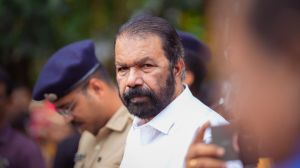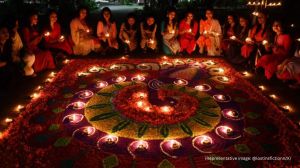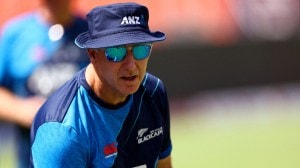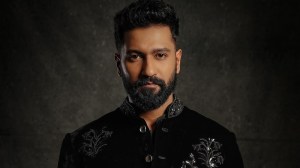Click here to follow Screen Digital on YouTube and stay updated with the latest from the world of cinema.
An Epic Retelling
As Geet Ramayan completes 60 years, a look at what made this collection of songs a milestone in Marathi light classical music
 Sudhir Phadke at a concert; an early performance of Geet Ramayan in Pune
Sudhir Phadke at a concert; an early performance of Geet Ramayan in Pune
On April 1, 1955, sharp at 8.45 am, presenter Purushottam Joshi of All India Radio (AIR), Pune, announced the commencement of a new programme — Geet Ramayan. It was the morning after Rama Navami celebrations, with the festive mood still palpable. The weekly programme, a retelling of the Ramayana in verses, was written by G.D. Madgulkar and the music was composed by Sudhir Phadke. The radio series began with the song Kush Luv Ramayana Gaati wherein the sons of Rama, trained by Valmiki, sing the songs of Ramayana in the latter’s court.
“Madgulkar and Phadke didn’t know it yet, but with that first song, a legacy was born,” says Shridhar Phadke, who is carrying his father’s legacy forward since 2005 by performing the songs across the country. Much before television became a common household commodity and the Mahabharata phenomenon gripped the nation, Maharashtra witnessed empty streets on Fridays when people rushed home to turn on their radios in time for the programme. They would tie garlands to the radio and pray before the programme would begin. “This weekly ritual was followed for the entire year that the programme aired,” recalls Shridhar. To mark the 60th year of Geet Ramayan, Shridhar performed all of its 56 songs at the National
Centre for the Performing Arts, Mumbai, on October 11. The programme was conceptualised by Sitakant Lad, who was the then-station manager of AIR, Pune. “At that time, the Ramayana only belonged to scholars. But with Geet Ramayan, it reached the smallest houses,” says Shridhar. The original writer-composer team had initially planned to release one song every week and thus , had worked on 52 songs. But the Hindu calendar had one extra month in 1955. So, four more songs were added.
The collaboration was a first-of-its-kind project on the Indian radio. Madgulkar’s writing was simple and lucid. Yet, it retained the complexities of the epic. Most importantly, he allowed Rama the emotions and weaknesses of a common man, thus relieving him of his divine stature, says Madgulkar’s son, Anand. The music — influenced by the Natyasangeet that was popular during the time — struck a chord with the listeners. Phadke got popular artistes such as Vasantrao Deshpande, Manik Varma and Lata Mangeshkar to sing for the programme. Mangeshkar gave voice to Maj Sang Lakshmana in which Sita pleads to Laxman after Rama abandons her.
The show’s popularity did not wane after it went off air in 1956. “The song, Paradhin Ahe Jagati Putra Manavacha, which describes the episode in the epic where Rama asks Bharat to return to his kingdom and honour his word as he honours him and leaves for exile, was once performed before Veer Sawarkar and Vinoba Bhave. This reduced the freedom fighters to tears,” recalls Shridhar.
After 1956, recordings circulated in the form of LPs, cassettes and later as CDs. Phadke and Madgulkar performed the songs all over the country in a two-hour-long Geet Ramayan programme. In later years, the songs were translated and sung in Hindi, Bengali, Gujarati, Telugu, Sanskrit and Kannada, among other languages. A compilation of the songs was published in over nine languages, including Braille. “For the programme’s silver jubilee celebrations in 1980, the singers from these different languages came together for a week-long performance in Pune. “Babuji (Phadke) would sing one verse in Hindi, and then a Bengali verse or one in Sanksrit would follow,” says Shridhar.
Today, Shridhar and Anand are taking steps to familiarise the youth with Geet Ramayan. Earlier this year, Madgulkar’s family launched an app to download the songs, apart from online documentation of Geet Ramayan. “We want to connect with the younger generation, that has not grown up on Geet Ramayan. We want them to discover that these songs, like the epic itself, are timeless,” says Anand.

- 01
- 02
- 03
- 04
- 05

































